RPG-2 — The Original ComBloc Anti-Tank Weapon
July 26th, 2022
9 minute read
Near the end of the 1981 adventure epic Raiders of the Lost Ark, hero Indiana Jones (Harrison Ford) could be seen holding a shoulder-fired anti-tank weapon. For a film that featured everything from a lost buried ancient city to a fantastical “flying wing” aircraft (not to mention the tablets that contained the 10 commandments), that weapon is probably not the most unrealistic item to be seen. However, it is a serious anachronism that history buffs will notice immediately.
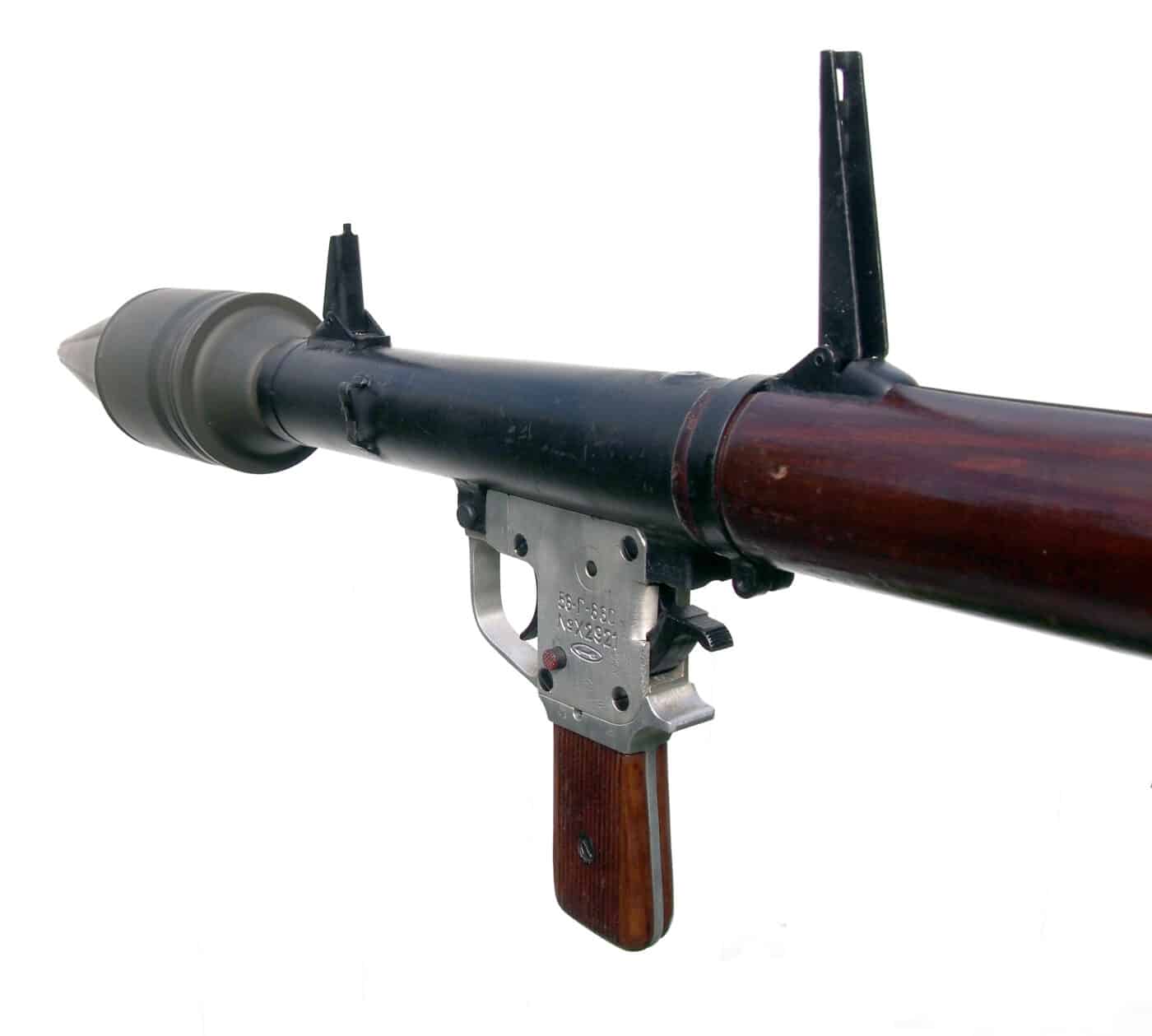
Set in 1936, no nation had actually developed a “man-portable” anti-tank rocket launcher, and it wasn’t until 1943 that the American M1 “Bazooka” was first deployed on the modern battlefield. A rocket launcher like the one Indy was seen holding was still a few years over the horizon.
However, the plot called for the tomb-raiding archeologist to have a weapon that could potentially destroy the biblical Ark of the Covenant and the Nazi soldiers surrounding it. Thus, the movie’s armorer, Simon Atherton, created a custom — and non-functional — rocket launcher that was actually based around a Chinese Type 56, a copy of the Soviet RPG-2.
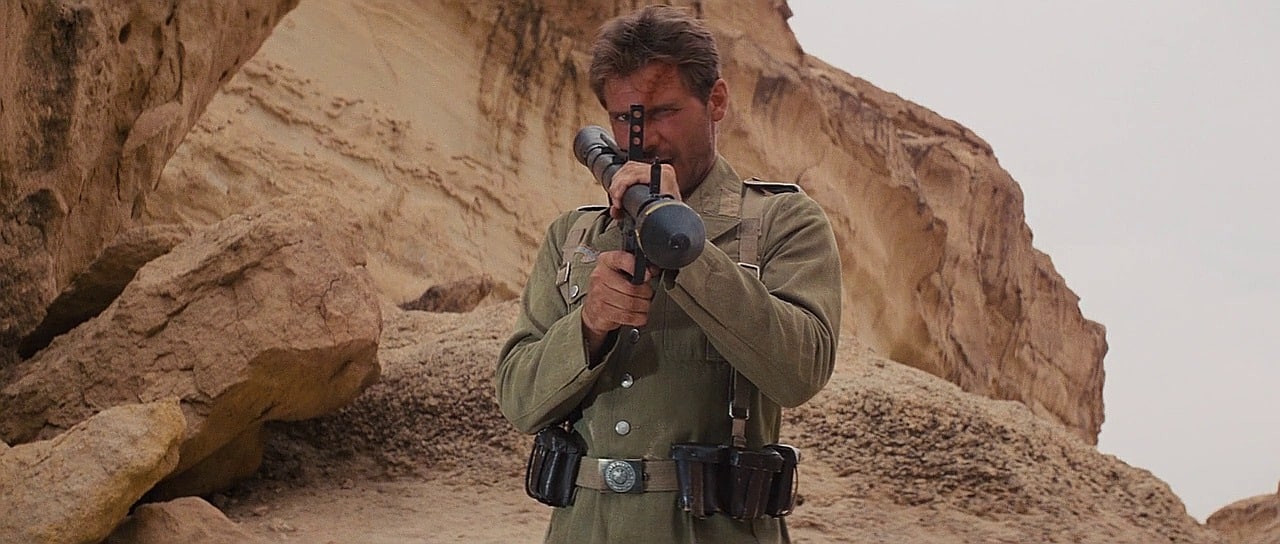
Atherton did a good job with his mock-up, which was outfitted with a shoulder grip similar to the M9 “Bazooka” along with a venturi tube-style rear muzzle. The resulting design closely resembled the conceptual Panzerfaust 250, a reusable variant of the single-use Panzerfaust that Nazi Germany developed at the end of the Second World War.
While Jones could have carried such a launcher, the RPG-2 on which it was based was notable for being among the first truly successful anti-tank weapons of its type.
The Origin
During the early stages of the Second World War, the British military were among the first to see the need for a man-portable anti-tank weapon and subsequently developed the Projector, Infantry, Anti-Tank (PIAT), which was based on the spigot mortar system. It came with a number of tradeoffs — while it had no back-blast and was simple in construction, it had considerable recoil and was rather difficult to cock, especially for a prone soldier.
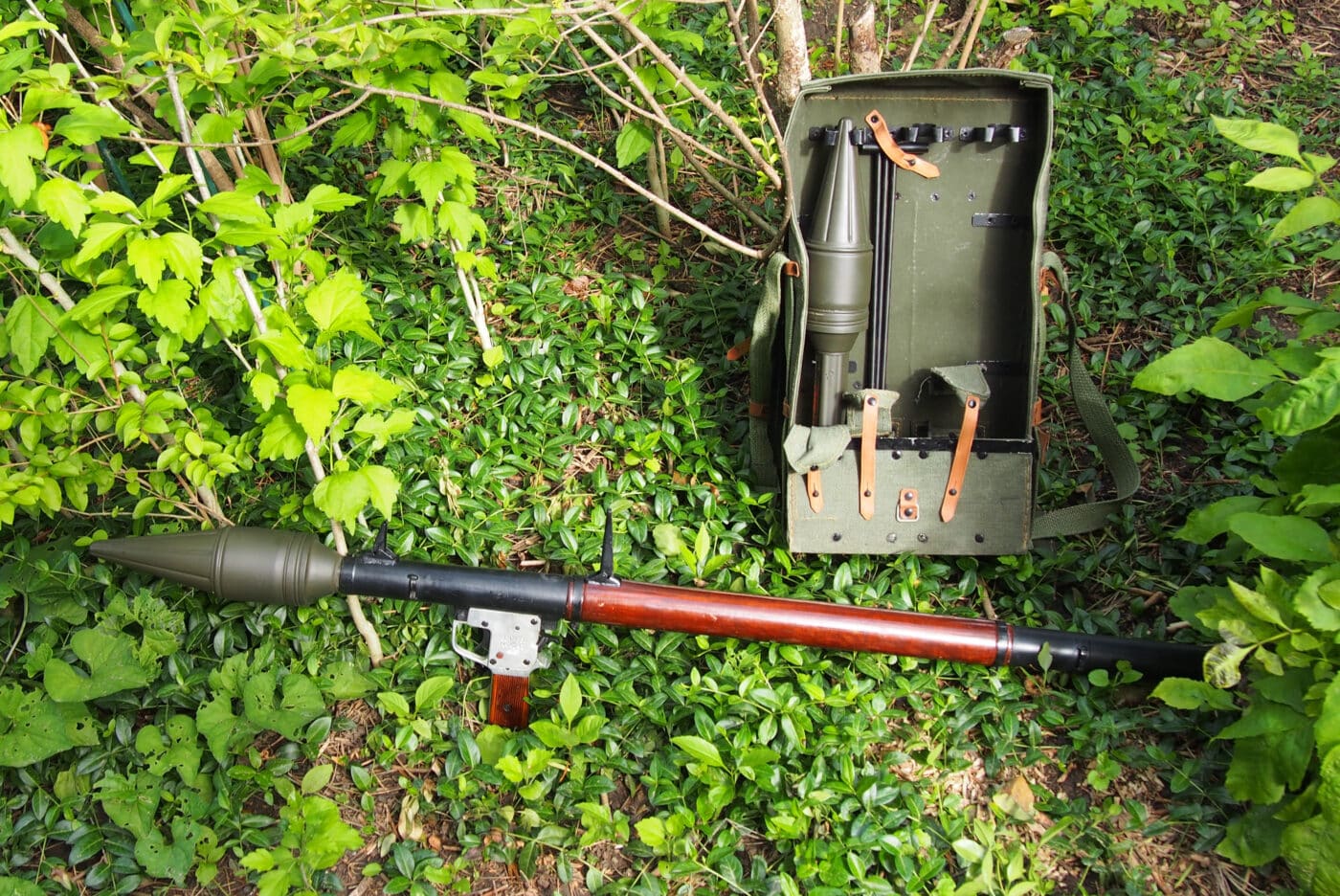
The United States military, which also saw that infantry soldiers lacked a capable means of countering tanks, went another direction and developed the M1 Bazooka. Despite some early issues, it proved to a successful rocket-propelled anti-tank weapon that could be employed by a lone soldier, and not surprisingly was widely copied. The Soviet Red Army, which had come up with various “ingenious” ways of countering enemy tanks — including strapping bombs to dogs and detonating the explosives from a distance — devised a unique man-portable anti-tank platform that borrowed liberally from other designs, notably the American bazooka and Germany’s improved version, the Panzerschreck; but also the aforementioned disposable Panzerfaust.
In 1944, the Soviets started work on the RPG-1 — Ruchnoy Protivotankovy Granatomyot-1 (Hand-held Anti-tank Grenade Launcher-1) — a lightweight anti-tank rocket that was equipped with a shaped charge warhead. Unlike the American bazooka, which featured a tube where the rocket-powered round was loaded from the rear of the muzzle, the RPG-1 was loaded from the front more like the Panzerfaust. But unlike the single-shot German weapon, the RPG-2 could be reloaded.
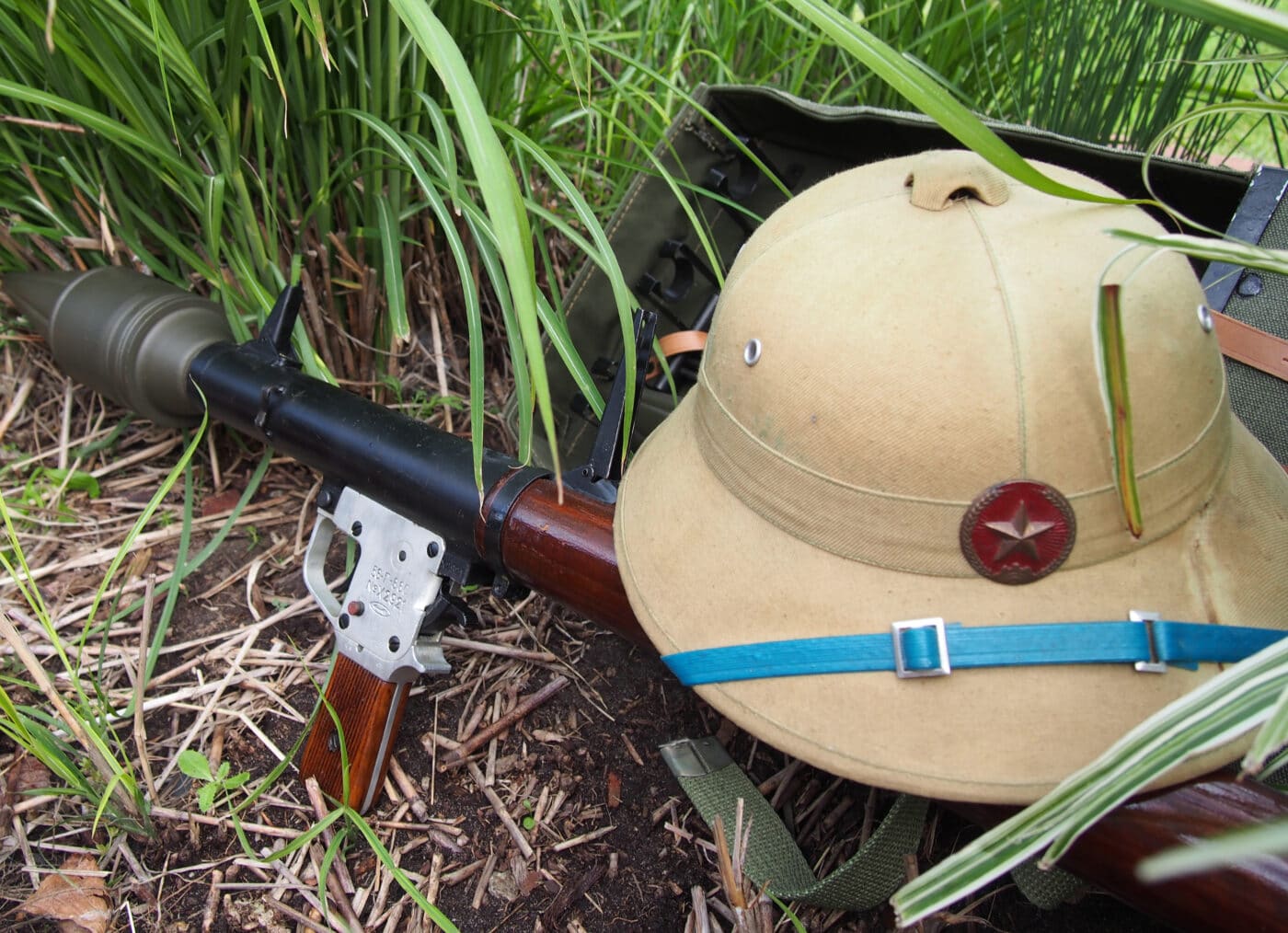
As noted, the Germans had considered such a weapon, the Panzerfaust 250, but never really made it past the prototype stage. How much that weapon lent to the RPG-1 design is unclear, but as the AK-47 likely borrowed at least some aspects of the StG44 — Germany’s infamous assault rifle — one can only speculate that German designs were at least reviewed at some point.
Work on the RPG-1 continued until 1948, but it was failed to meet expectations — most notably the fact that it was accurate only to about 160 feet (50 meters) and couldn’t penetrate the armor of late-war tanks.
Instead, the designers began anew and the result was the RPG-2. It is important to stress that the moniker was not for “rocket propelled grenade,” but essentially it was an abbreviation of Russian that translated to hand-hand anti-tank grenade launcher. In many ways, it was essentially meant to provide the best characteristics of the M1 Bazooka and the Panzerfaust, including being low-cost to produce, easy to load, compact to transport and offering a high-rate of fire.
It was made of stamped steel that was covered with wood to protect the operator from the launch heat. It was also light and compact enough that it could be comfortably used by a single soldier; but in practice, at least two people were really needed to operate the weapon to its maximum effectiveness.
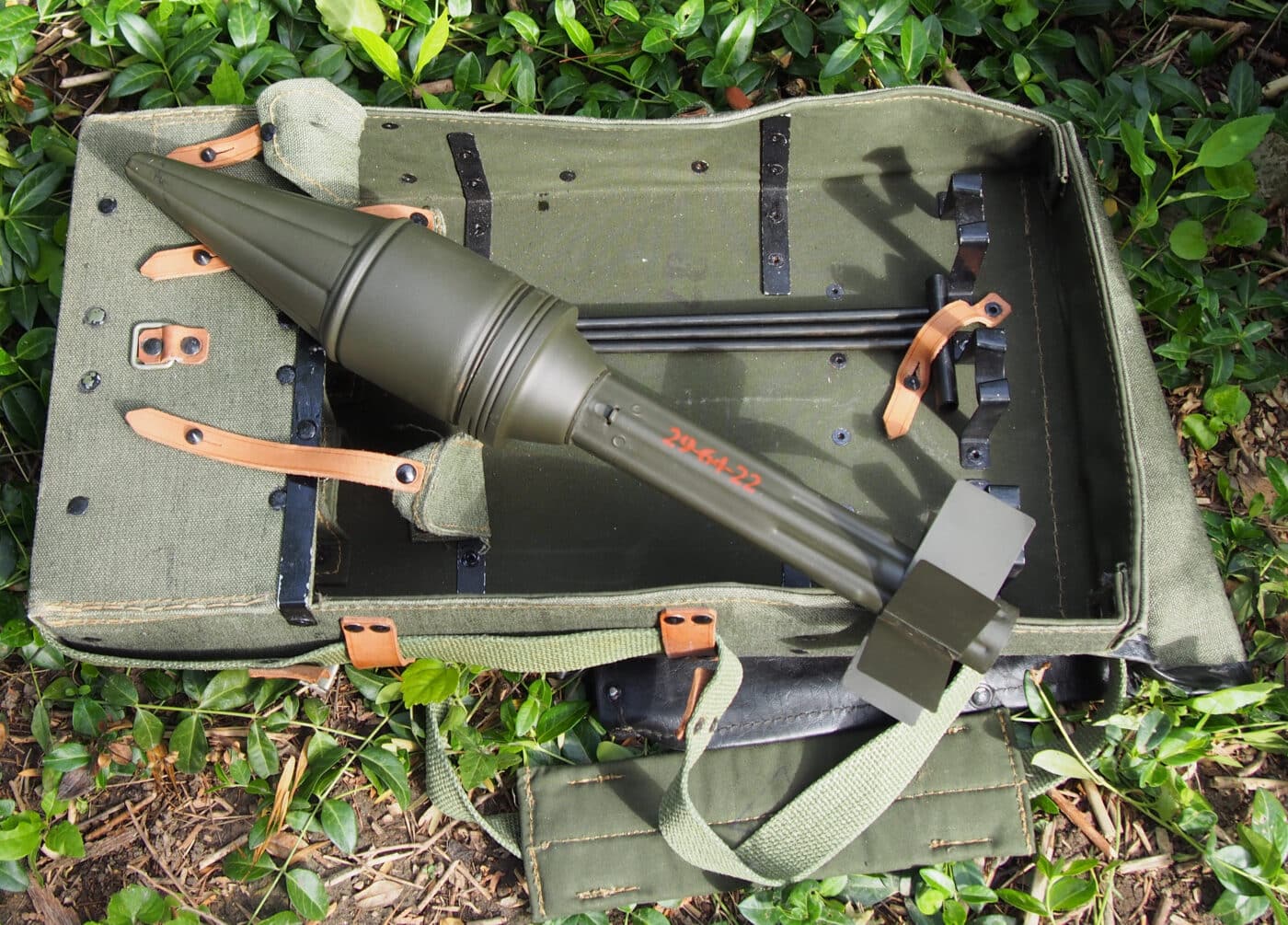
As with many Soviet weapons, it was designed to be easy to operate. The RPG-2 round would be inserted into the front of the barrel, a hammer on the pistol/trigger grip was cocked and it was ready to be fired. It was effective against move targets out to range of 100 meters, but could be employed against stationary targets such as buildings and fortified positions to upwards of 150 meters. Its optics were in a word, “basic,” and involved just a flip-up iron sight.
Unlike with other anti-tank weapons, the RPG-2 was only produced as a fin-stabilized High-Explosive Anti-Tank (HEAT) round. It was designed to be able to penetrate upwards of 200mm of Rolled Homogenous Armor (RHA) — which meant that it lacked the capabilities to take out a main battle tank (MBT).
However, the weapon’s simplicity, light weight, low cost and ease of use made it a popular option — and it was better than no anti-tank weapon.
The RPG-2 Goes to War
While it was officially introduced into service in 1949, production was slow and as a result, none were reported to have been used in the Korean War (1950-53). It would have likely been fairly effective against the armor employed by the United Nations coalition, but by the time the weapon was produced in large numbers in the mid-1950s, the RPG-2 was largely already obsolete.
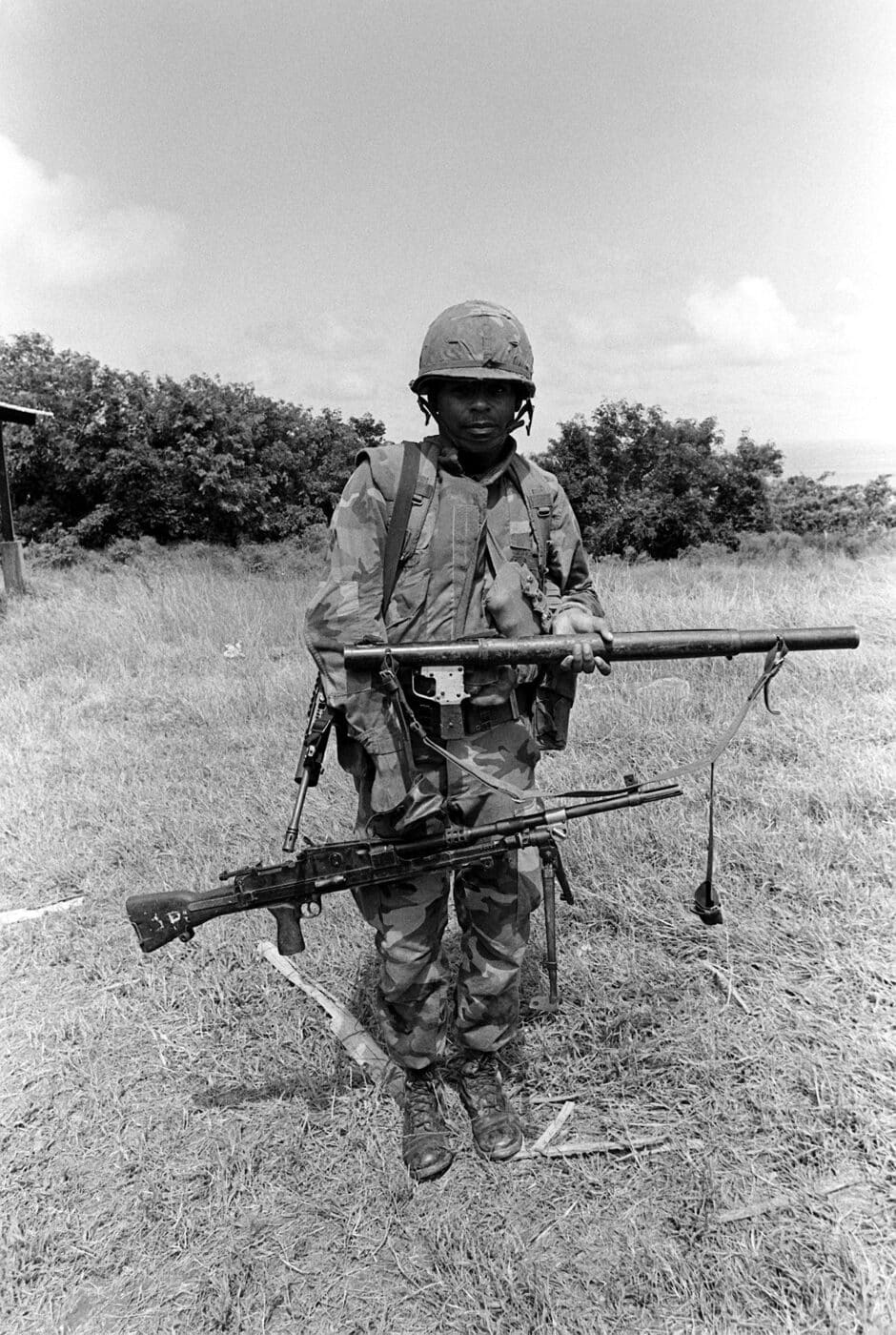
Tank armor — notably with the American Patton series — had increased, making the anti-tank weapon obsolete. The Soviets went on to develop the more powerful RPG-7, but the RPG-2 still remained in use with many Communist Bloc nations.
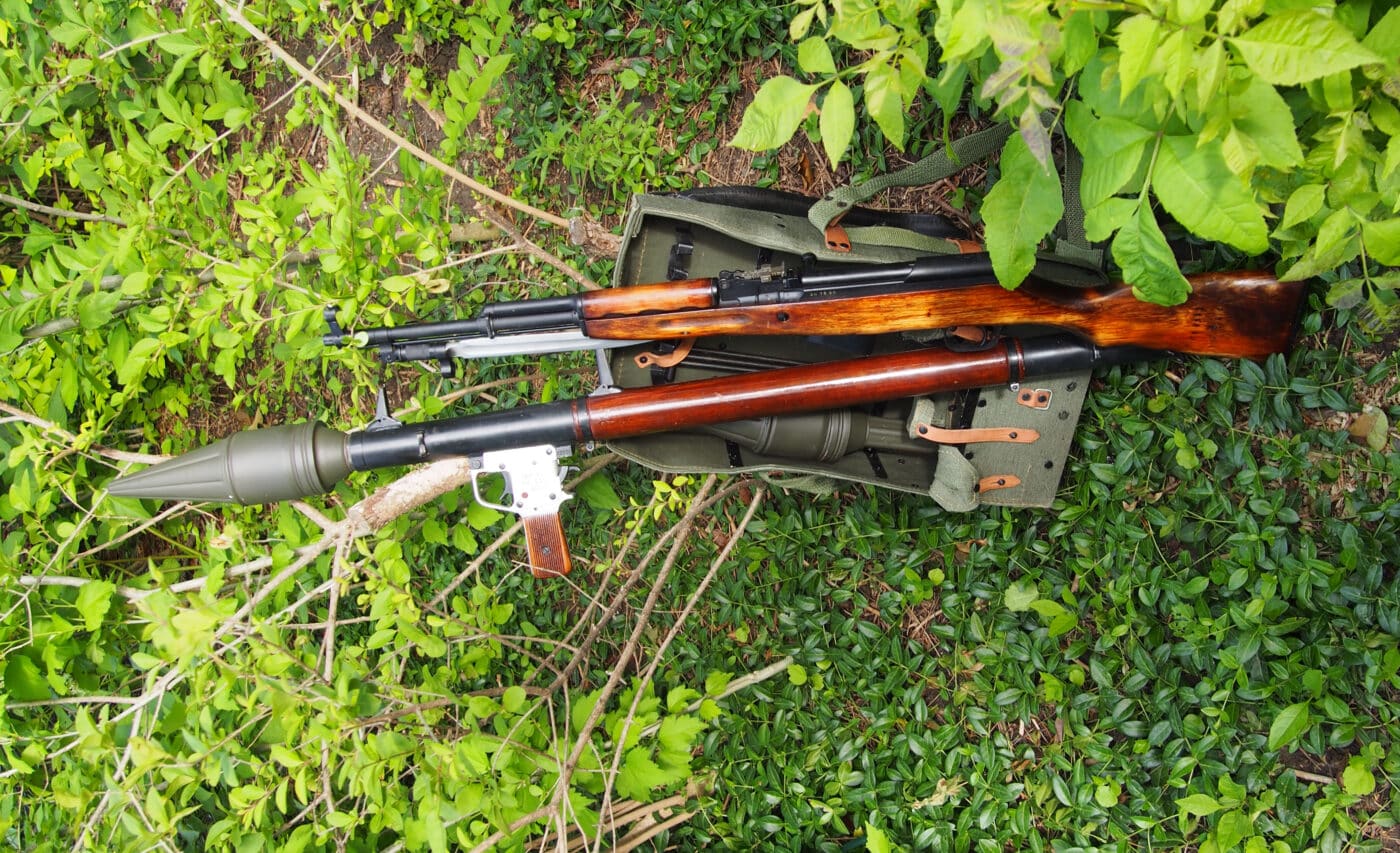
Cost was likely a factor, and it was copied and produced by the People’s Republic of China as the Type 56, by North Vietnam as the B40, by Yugoslavia as the M57 and by Czechoslovakia as the P-27. It was used extensively against U.S. and allied forces during the Vietnam War, and proved effective at targeting fire bases and bunkers, but was also used against trucks and helicopters.
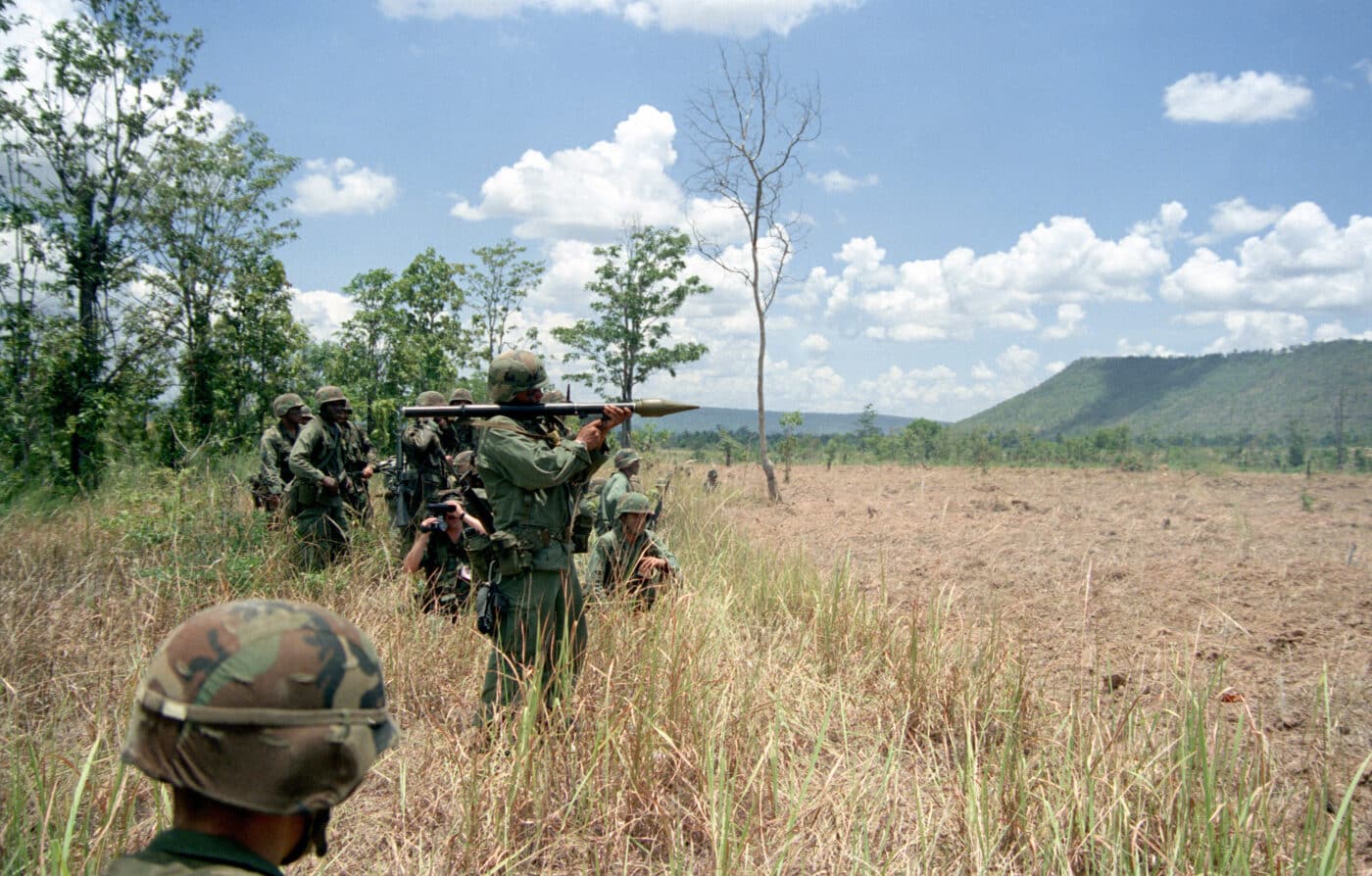
It was later employed during the Nigerian Civil War, Rhodesian Bush War, Portuguese Colonial War, Salvadoran Civil War, Lebanese Civil War, and Somali Civil War. The launcher was produced until 1960, but with hundreds of thousands (at least) being manufactured, the weapon saw use in the Somalia Civil War, Yugoslav Wars, Libyan Civil War, Iraqi Civil War of 2014-2017 as well as in the ongoing Syrian Civil War. There are also reports that insurgent/guerilla forces had used the weapon during the months-long armed conflict in the Philippines in 2017.
RPG-2 in Popular Culture
Even though the RPG-2 was quite a prolific anti-tank weapon, its appearance in popular culture has been limited. In fact, Raiders of the Lost Ark was the first time the early Cold War-era launcher was even seen in a movie. One factor was that due to the divide between East and West, few actual Soviet-designed small arms actually appeared in movies — including those about the Vietnam War.
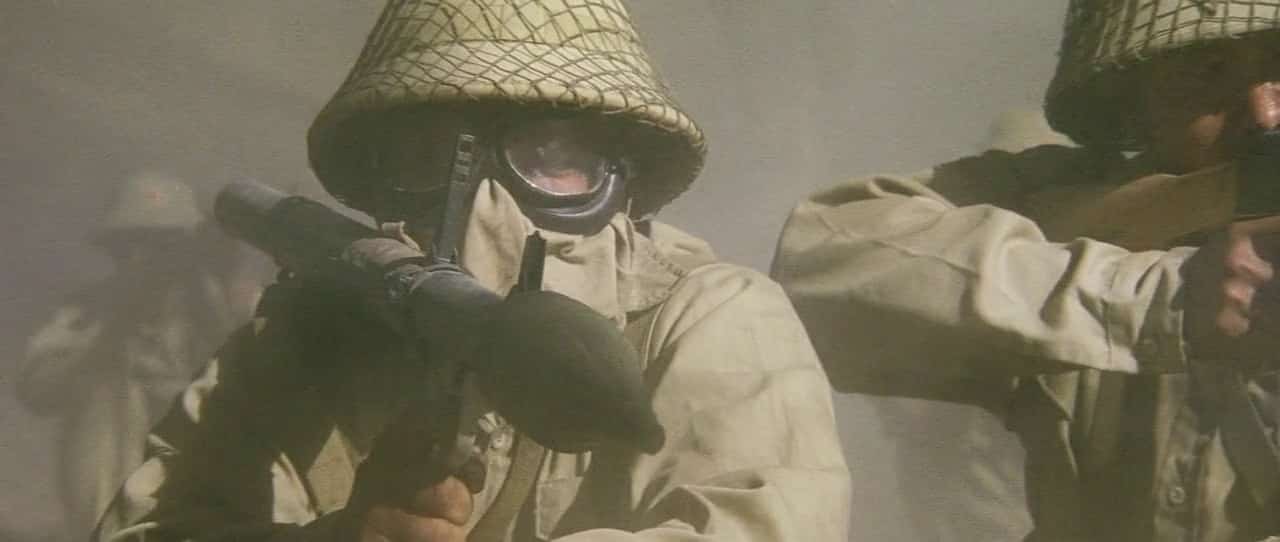
The RPG-2 actually made its debut in the British crime-action TV series The Professionals, which aired on the ITV network from 1977 to 1983. The anti-tank weapon was carried by terrorists during the third season episode “A Hiding To Nothing.”
The first “true” appearance of the RPG-2 in a film was in 1984’s The Killing Fields, and then it was only seen carried by a Khmer Rouge soldiers and not actually employed in combat. The weapon’s “combat debut” was in the 1985 Canadian-American TV movie The Park Is Mine, which became the first film made for HBO. Based on a novel of the same name by Stephen Peters, it tells the story of a Vietnam War veteran (played by Tommy Lee Jones), who takes forceful control of Central Park as a statement to remember those who served in the war. A mercenary team is sent in to track Jones’ character down, and among the weapons used is an RPG-2 — a strange choice, but this First Blood-clone didn’t exactly focus on realism (Toronto also stood in for Central Park, while some scenes clearly weren’t filmed in an urban park — Writer’s note: I lived in NYC for almost 20 years, and that wasn’t close to resembling Central Park!).
The RPG-2 — often Chinese Type 56s or Vietnamese B-40s — could be seen in a handful of Vietnam War-era films, including Platoon (1986), Forrest Gump (1994), We Were Soldiers (2002), and Danger Close: The Battle of Long Tan (2019). The Cold War-era anti-tank launcher also appeared in a just a few video games, beginning with 2004’s Battlefield: Vietnam, while it also could was an option in The Stalin Subway, Metal Gear Solid: Peace Walker and Karma Online.
Collecting the RPG-2
The iconic Soviet-designed anti-tank weapon was largely unavailable in the collector’s market in the United States throughout the early post-Cold War era. While U.S. soldiers certainly would have encountered the RPG-2 in Vietnam, few likely made it back to the United States — and one can only imagine the difficulty in attempting to smuggle back the nearly three and a half foot long launcher home.
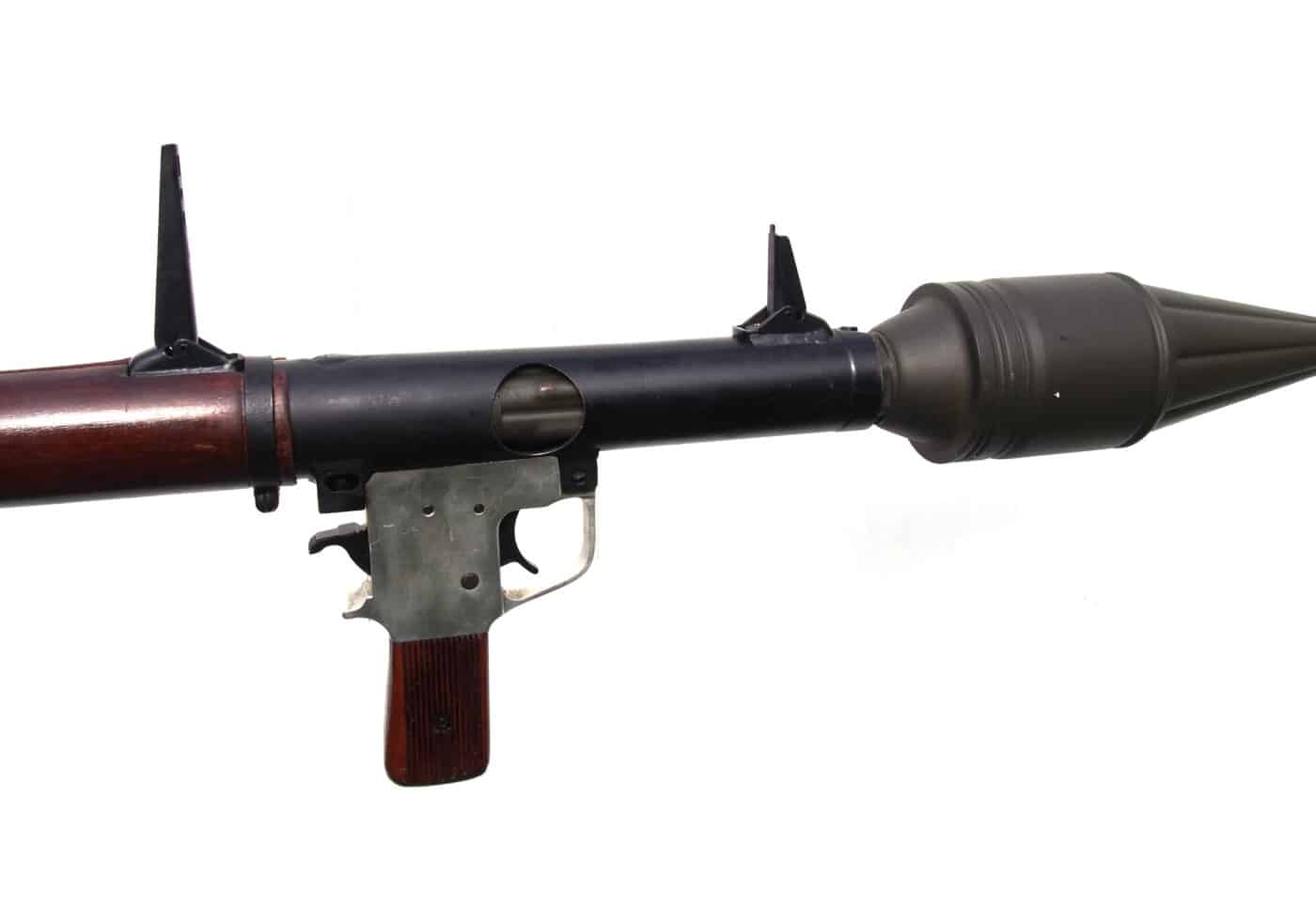
This author has never seen — or even heard of — a live transferrable (legal) RPG-2 being offered for sale. Due to import laws, it would seem highly unlikely that any legal operational models are even in the country outside of what the United States military might have for testing and evaluation purposes. I’d certainly love to hear if anyone knows of any that are in private collections.
That said, many RPG-2s from Bulgaria, Poland and Romania have been offered for sale in the United States as deactivated military surplus. After those nations joined NATO, it appears that their stocks of the Cold War-era Soviet Bloc weapons were sold off. Various online retailers continue to offer these for sale — and the author has seen a demilled RPG-2 for sale on GunBroker. The prices have steadily increased, however.
As with other rocket launchers, to be legal, a hole should be cut in the tube that that is at least equal to the diameter of the muzzle and a pin should be welded in place to make it impossible to load a live round (not that those should be in the country in the first place). The firing pins should also be removed.
While you can’t take it to the range (at least not to shoot), these are still a notable weapon from the Cold War, and one that was carried (and is still carried) in conflicts around the world.
Editor’s Note: Be sure to check out The Armory Life Forum, where you can comment about our daily articles, as well as just talk guns and gear. Click the “Go To Forum Thread” link below to jump in!
Join the Discussion
Continue Reading
Did you enjoy this article?

 174
174






